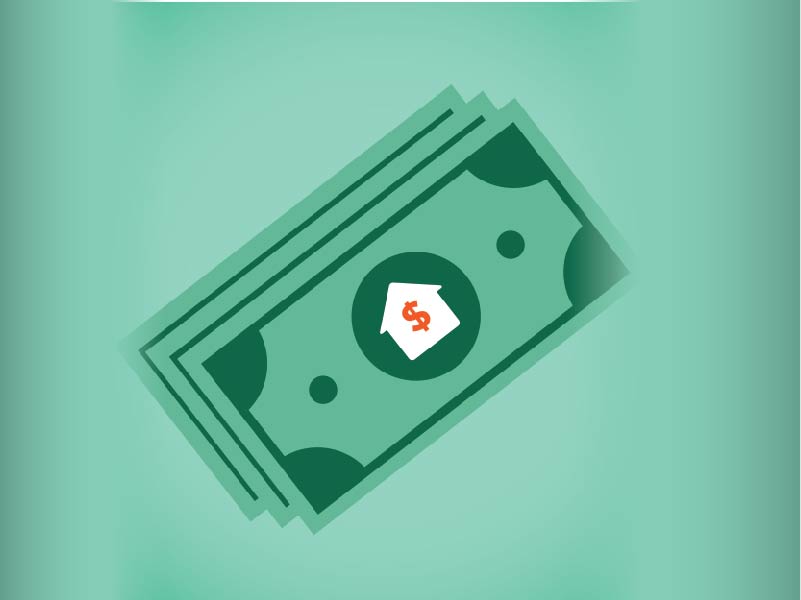-
-
-
FNBO
InsightsNov 01 2018
-

The Monthly Mortgage: How Much Can You Borrow and How Much Can You Afford?
Finding a home, a castle to call your own, is still an American dream. For many, owning a home is a rite of passage, and one that remains available to individuals with a wide range of income levels.
Which begs the question: How much home can I afford?
It’s an important question that needs to be asked at the beginning of the home-buying process, and it comes with several determining factors.
“Mortgage lenders not only look at your income, assets and the down payment you have, they also look at all of your liabilities and obligations, including auto loans, credit card debt, potential property taxes, insurance and your credit rating,” says Alan LaFollette, Managing Director, National Mortgage Sales at First National Bank.
How much do you qualify for?
One method mortgage lenders use to measure how much money you can borrow is a traditional ratio known as the 28/36 rule. It refers to two income ratios that help provide a guide to determine your maximum monthly payment. The “28” represents monthly housing costs, which include the principal and interest of your mortgage payment and any money deposited into your escrow for insurance and property taxes. This total should not exceed 28 percent of your monthly gross income, which is what you earn before taxes. If you apply for a loan with a co-borrower, a lender includes both of your incomes.
The “36” refers to your entire debt load, including your mortgage payment, car payment, credit cards, student loans and other monthly payments. This total should not exceed 36 percent of your pre-tax income. For example, if you make $5,000 per month before taxes, your monthly housing limit would be $1,400 (28 percent of $5,000). Your debt limit – including your monthly mortgage and any other monthly debt payments – would be $1,800 (36 percent of $5,000). Thus, if you have monthly payments for a car, student loan, credit card and other monthly bills that equal $700, you would need to find a home whose mortgage was $1,100 or less.
“Of course, there are many other factors we consider when determining how much money you can borrow for a home loan,” says First National’s LaFollette. “But these ratios can give you a starting point. A high credit score might qualify for a lower interest rate, for example. Your down payment will also determine how much home you can buy.”
A rule of thumb
One quick way to estimate a reasonable range for your home purchase is to “multiply your annual salary by three on the low end and four on the high end,” says thestreet.com.1 So, if you make $60,000 a year, you should be looking at homes priced between $180,000 to $240,000. “It’s also important to consider balancing other priorities like saving for retirement or your child’s education. Let alone taking family vacations each year,” says thestreet.com.
So, what about that down payment?
Simply put, the bigger the down payment, the bigger the house you can afford to buy. In other words, with a larger down payment, you can afford to buy a higher-priced house with what will likely be a smaller loan.
A homebuyer’s down payment can come from a number of sources, such as savings, a gift from a relative, a Roth IRA or Roth 401(k) plan, or from equity that they’ve built up in their current residence (equity is current market value of the house minus what you still owe on the mortgage.)
An ideal down payment to make on a home is 20 percent, which allows the homeowner to avoid mortgage insurance.“But borrowers can qualify for mortgages that require less than 20 percent for a down payment,” says LaFollette. “That’s why it’s important to meet with a mortgage expert at your bank at the beginning of the home-buying process. He or she can help you determine which mortgage is best for you.”
If you choose to take money out of a retirement plan for a down payment on a home, choose wisely, says interest.com. “Taking money out of retirement plans for a down payment is not ideal. But we know that many families have most, if not all, of their savings tied up in individual retirement accounts (IRAs) or 401(k) accounts where they work. If that’s the case, tap a Roth IRA or Roth 401(k) plan first.2
“Because contributions to Roth plans are fully taxed before they’re made, you can withdraw what you’ve put into those accounts at any time without incurring penalties or additional taxes.” Furthermore, if you’ve held a Roth IRA for at least five years, you can withdraw an additional $10,000 to buy a home without paying taxes or penalties.
“The next place to turn is a traditional IRA, which will allow you to withdraw up to $10,000 for the purchase of a first home without penalty. (If you have individual accounts, you and your spouse could take a total of $20,000.),” says interest.com.
“The take away from all this goes back to connecting with a mortgage expert at your local bank,” says LaFollette. “That should be the first thing you do.
“We walk homebuyers through every step along the way to make sure they are making the best decisions. And make no mistake, buying a home is a big decision, but that doesn’t mean it has to be an intimidating or unpleasant experience.”
Got Questions? Stop by your local First National Bank branch today and visit with a mortgage loan expert.
1 “Rules of Thumb to Determine How Much to Spend on a House” – https://www.thestreet.com/story/12849280/1/rules-thumb-determine-how-much-spend-house.html
2 “How Much House Can You Afford?” – http://www.interest.com/mortgage/news/how-much-house-can-you-afford/
The articles in this blog are for informational purposes only and not intended to provide specific advice or recommendations. When making decisions about your financial situation, consult a financial professional for advice. Articles are not regularly updated, and information may become outdated.